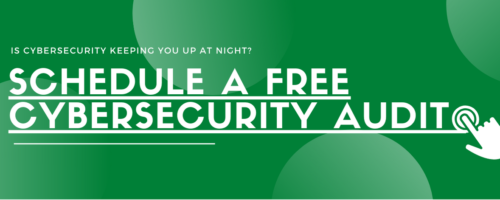Present Blog – IT Thought Leadership
Blog Present-IT thought leadership
Blog Present-IT thought leadership
IT thought leadership blog for CIOs and CTOs in Canada seeking resources to drive IT as a business contributor: hybrid cloud, infrastructure, managed services and security and IT recruitment.
 Cybersecurity. The term is widely used, and governmental and public agencies have been well aware of its importance for a long time due to the constant rise of threats coming both from inside and outside the workplace. This is why October was chosen to educate citizens about the risks of cyber threats, through the Cyber Security Awareness Month in the United States and Canada.
Cybersecurity. The term is widely used, and governmental and public agencies have been well aware of its importance for a long time due to the constant rise of threats coming both from inside and outside the workplace. This is why October was chosen to educate citizens about the risks of cyber threats, through the Cyber Security Awareness Month in the United States and Canada.
With the Internet of Things, connected devices and smart everything added to the usual electronic tools developed to make our lives at work and home easier, a slew of potential risks has been introduced that needs to be mitigated.
So, what are those risks, and what can we collectively do to alleviate them?
- First, the cost of a cyberattack can be tremendously expensive, with 55% of SMB reporting attacks in the last year, averaging up to $68K in resulting costs.
- Then, the consequences can be catastrophic. Data loss, confidential information breaches, loss of equipment even, not to mention the amount of time lost to recovering the data and ensuring the return to normal.
The main problem is, even though 86% of companies say cyber security is within their top 5 priorities, it is clear that most organizations lack the tools, the expertise and the services to properly defend themselves. Did you know that 71% of all SMBs only had foundation
al security devices in place (antivirus, firewall etc…)?
Besides, cyber threats can come from multiple places:
-
- Ransomwares are on the rise, where attackers take data hostage and ask for money to return it.
- Malwares have been there for a while and are only getting more difficult to manage.
- Phishing is becoming more and more mainstream, with emails and fake web pages made to collect private info from users.
- More and more threats are now coming from the inside, especially with the increasing popularity of BYOD. 54% of firms said customer data was the most at risk to insider attacks – mainly due to hackers gaining access to valid credentials, or even disgruntled ex-employees.
Thankfully, basic rules can ensure compliance with the industry’s best practices when it comes to cybersecurity:
- The use of baseline devices such as firewalls, antivirus and anti malwares is an essential way to prevent threats from even entering your network.
- Multi-factor authentication on end-users devices help mitigate the risks of their credentials falling into the wrong hands.
- Behavior analytics is quickly becoming a go-to for enterprises who need to identify suspicious behaviors and departures from the norm.
- Cloud encryption is another easy way to deploy best practices in order to keep sensitive data safe.
- BYOD security also requires agentless deployment modes that don’t require software installation on endpoints so as to make monitoring seamless and efficient.
- Finally, educating your employees, both remote and on-site, might be the most important part. Proper training on how to identify threats is key in fighting them, and should be considered the first line of defense.
Present can help you get an overview of your systems and assess your level of security thanks to the help of our security and network experts. We can identify the vulnerabilities of your organization and give you pointed solutions to resolve security issues before they become serious threats.
About Blog
The right use of technology addresses business challenges and drives business growth in all areas of an enterprise. We hope this blog will offer insight into developing strategies and tactics to enable you to identify those key drivers of growth and keep pace with and anticipate the rapid technology change of today.
Posts by Topic
- IT infrastructure (116)
- IT security (92)
- IT Innovation (59)
- Trends (51)
- Cloud (47)
- Managed services (46)
- Mobility (38)
- Digital transformation (29)
- CIO/IT leaders (28)
- Events (28)
- News (23)
- Microsoft 365 (17)
- Security (17)
- IBM (16)
- Disaster recovery (DR) (14)
- High availability (12)
- Recruitment (12)
- Storage (12)
- Big Data (11)
- Collaboration (11)
- AI (9)
- Case study (9)
- Office 365 (9)
- BYOD (8)
- Customer Experience (8)
- Hybrid Cloud (7)
- Current events (6)
- SAP Hana (5)
- Business intelligence (BI) (4)
- Converged infrastructure (4)
- Convergence / Hyper-convergence (4)
- Virtualization (4)
- Copilot (3)
- Future of retail (2)
- Retail (2)
- trend (2)
- Backups (1)
- Beacon (1)
- Blog Migrations (1)
- Contests (1)
- Infrastructure TI (1)
- Innovation TI (1)
- IoT (1)
- MDM (1)
- Stockage (1)
- Virtualisation (1)
- blockchain (1)
- cio (1)
- replication (1)
- Étude de cas (1)

